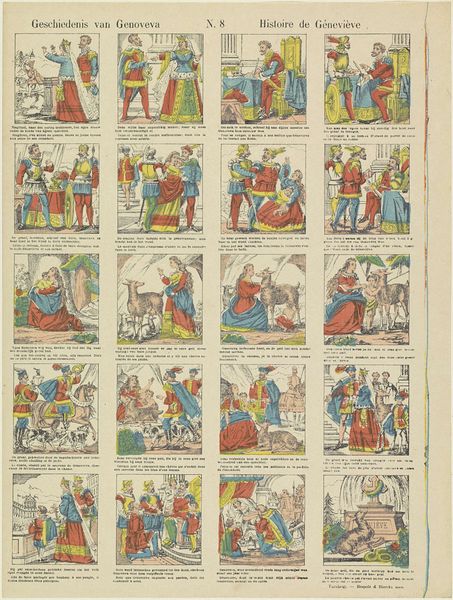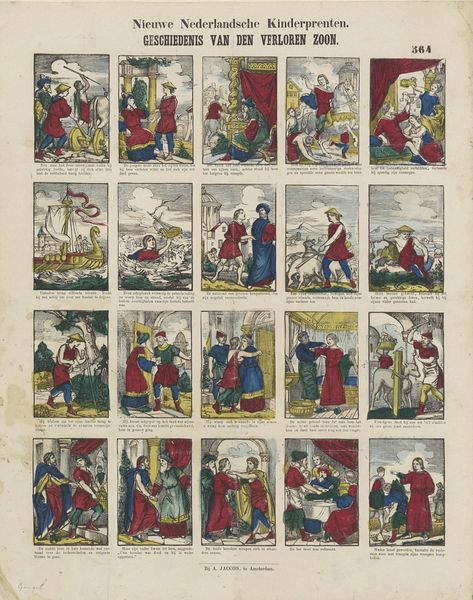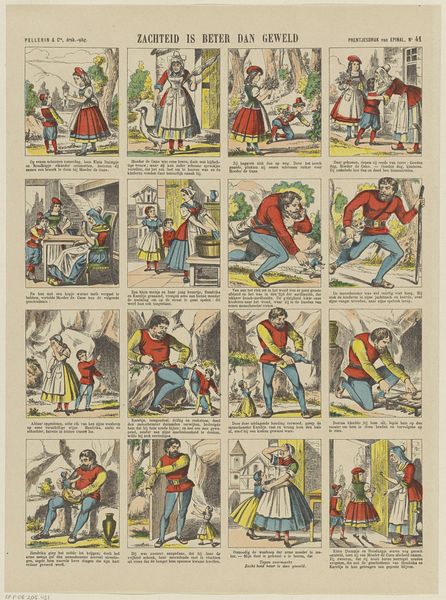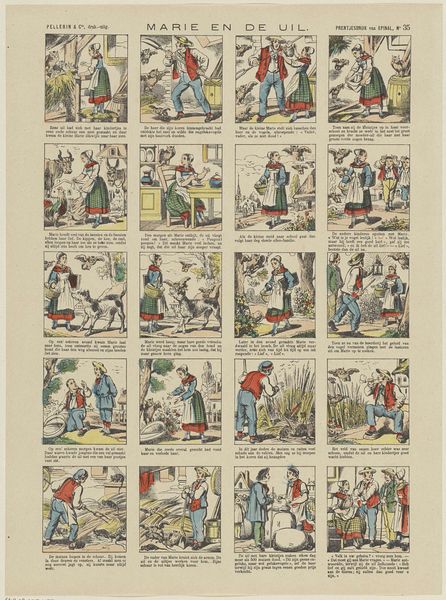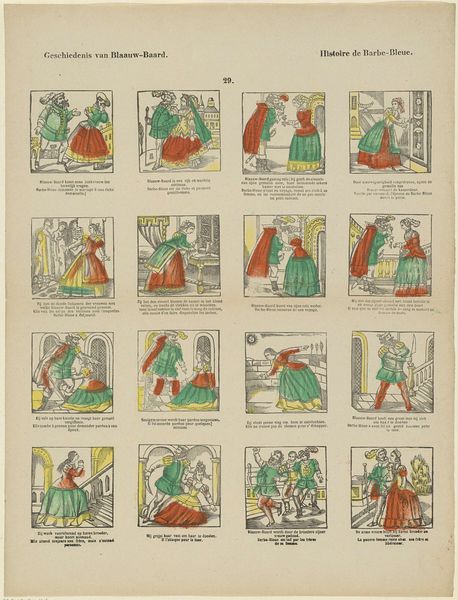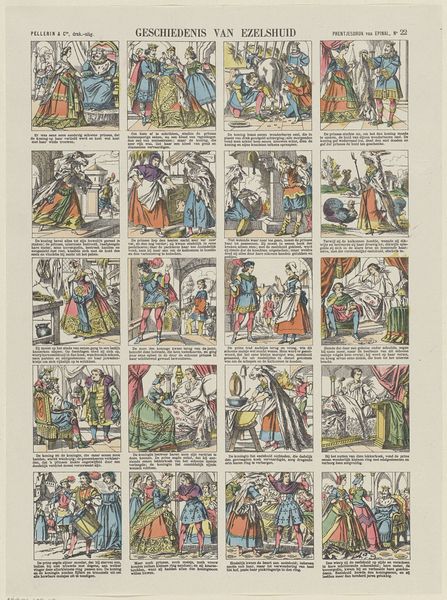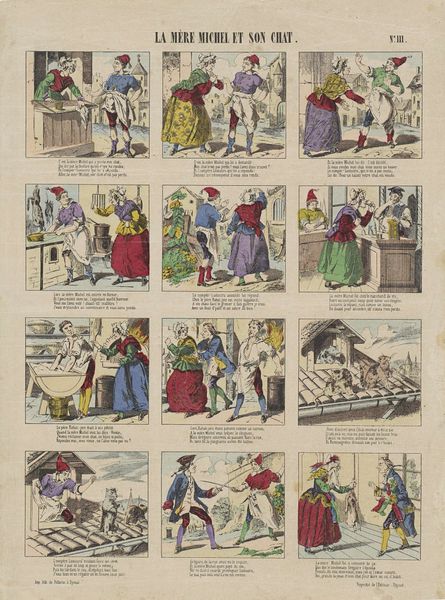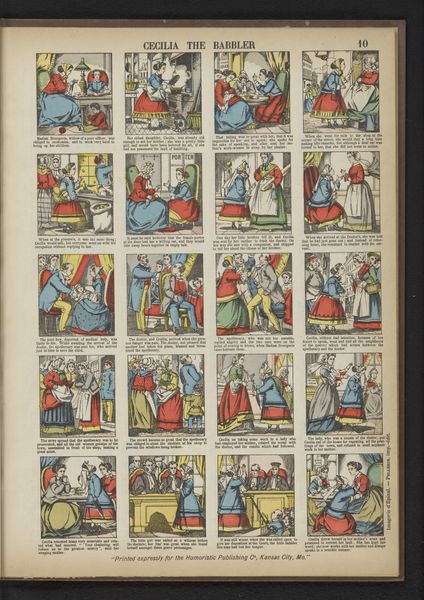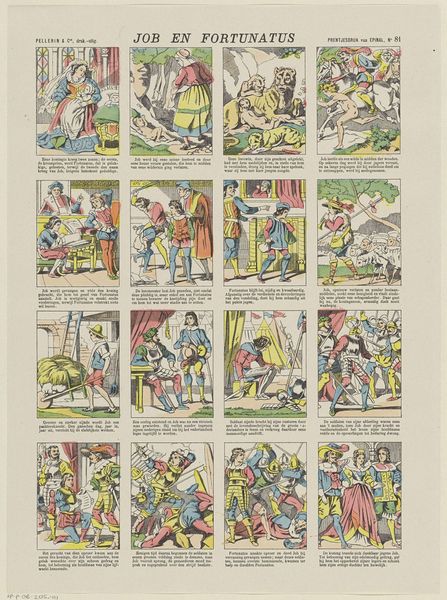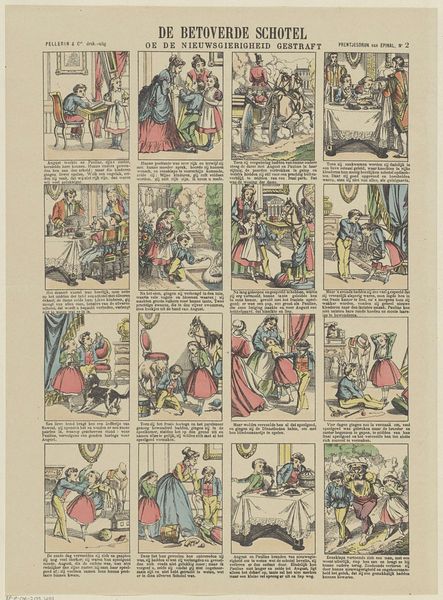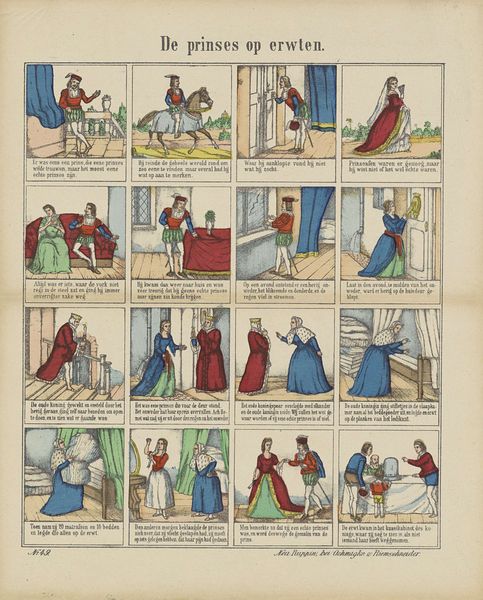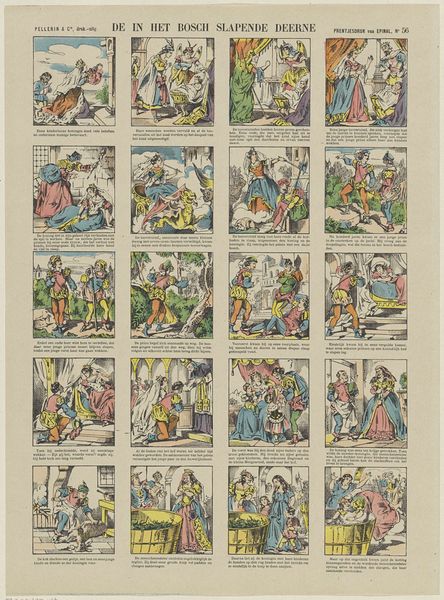
graphic-art, print
#
graphic-art
#
comic strip sketch
#
narrative-art
#
comic strip
#
pen drawing
# print
#
comic
#
coloring book page
Dimensions: height 399 mm, width 295 mm
Copyright: Rijks Museum: Open Domain
Curator: Let's have a look at "Geschiedenis van Blauwbaard," or "The History of Bluebeard," created around 1902 by Pellerin & Cie. It seems to be a printed comic strip retelling the classic, rather dark, fairy tale. Editor: My first thought? The panels have an intriguing, almost theatrical composition. Look at the staging, the slightly awkward poses. It gives everything a wonderfully quaint, slightly unsettling air. Curator: Absolutely. Each vignette captures a crucial moment in the narrative. The color palette is quite interesting; muted reds, blues, and yellows seem to delineate character and action, recalling folk traditions in storytelling, even morality plays. It’s no accident that Bluebeard’s garments tend to be dominated by reds. Editor: It's tempting to read the limited palette as a technical constraint of the printing process, but I think it also contributes to the overall graphic impact. See how the sharp outlines define each form? There is an intriguing contrast between flat shapes and suggestion of depth. Almost like medieval woodcuts. Curator: This deliberate flatness connects, for me, to a symbolic simplification of the narrative. It is Bluebeard, the villain, whose story persists across cultural memories. We’ve inherited archetypes, and this kind of storytelling freezes these images. Editor: Though simplified, notice how gestures convey a spectrum of emotions from distress to malice. What about the repetition of architectural features--arches, staircases? Are those meant as structural devices, ways to unite discrete narrative beats? Curator: Exactly. I think they serve as both separators and links, underscoring the repetitive cycles of Bluebeard’s violence. The castle is as much a character as the figures are. Editor: A fascinating exercise in distilling a complex narrative into accessible images and one could read so many interlinking parts across time, from gothic novels to children’s books, here. Curator: Indeed. Reflecting on "The History of Bluebeard" makes one consider not just the individual elements, but also the narrative architecture, the ways images can speak and persist.
Comments
No comments
Be the first to comment and join the conversation on the ultimate creative platform.
